Asking Customers for a Review
Providing a great product will naturally generate some reviews from enthusiastically satisfied customers. But if you put in more effort into generating reviews from a wider audience — who might not take the time otherwise — you’ll blow past your competitors and win more new customers. Here are six tips for maximizing your review program.

Be specific about what type of review you want
In the B2B world, having the logo of a well-known company or the picture of an influencer in your industry on your website are both good signs to your potential customers that your product is driving success at companies like theirs. The most influential reviews contain short, relatable quotes that highlight tangible business outcomes and come from known companies in the B2B world, or are from influencers in the B2C world. It is an excellent strategy to reach out to customers who are known promoters of your company and ask them for a quote about the value they’re driving from your product or service that they would be willing to share as part of your promotional material. Often prospective customers want to speak with your existing customers as reference accounts to discuss specific use cases. The customers you chose for those calls are likely the same customers you would ask to do a public review.
In the case of soliciting a review from a specific customer, work with them to formulate a phrasing that they are happy to have attributed to their name, while at the same time espouses a value driver or key marketing differentiator that you wish to share with your customers. As Groove found:
“ The best reviews don’t just praise a product; they make it abundantly clear exactly who the product is right
for. ”
Prospects want to know if the product will drive a positive outcome by solving their business problem, and if there were any bumps in the road during implementation or usage for others. When you ask a customer for a review, be very specific with what you’d like them to highlight, but also allow the freedom to include details that they see as important within their particular industry or peer group. You do not want to come across as forcing their opinion or putting words into their mouths.
Here’s an example email you could use to ask a customer to leave a review:
Hi Collette!
I really enjoyed hearing about how your experience has been with Company X so far in our last support call. The use case that you highlighted is something that many potential customers have asked us about, so I’m so glad it’s working so smoothly for you.
If you have time today, would you mind leaving a brief review on our Capterra product page? It’s helpful for potential customers to hear how our existing customers are finding value with the product — especially customers that are in similar industries.
It should only take about 5 minutes and it would mean the world to us.
Thanks so much,
Stephanie
Customer Success Manager
Incentivize customers to leave reviews
Another way to get reviews is to incentivize your customers to do so. While this depends heavily on your industry, you could offer a reward or an entry into a contest in return for a review. For example, offer compensation in the form of discounted product, or loyalty points or even swag. A small incentive goes a long way!
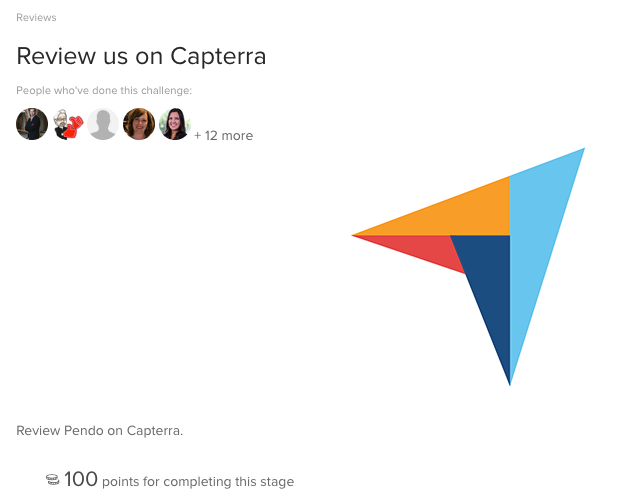
(This is from the Influitive community for a company called Pendo. They incentivize customers to rate on Capterra to get points that can be traded for company swag, or even services work!)
When getting reviews, be careful not to add hyperbole into the comments or to stretch the truth of a success story. It is unlikely your product literally 'changed the world, ' and such comments can come across as unrealistic. Be specific and point to clear, objective wins. This problem also exists on the negative side of reviews. A review that is hyper-negative or even antagonistic is less likely to be trusted than a balanced review that lists out cons factually.
Finding your Promoters
You’ll have a better chance of collecting positive, meaningful reviews if you ask customers who are already inclined to recommend you. If you’re running an Net Promoter Score program, these customers are those that respond with a 9 or 10 to the NPS question — otherwise known as your promoters!
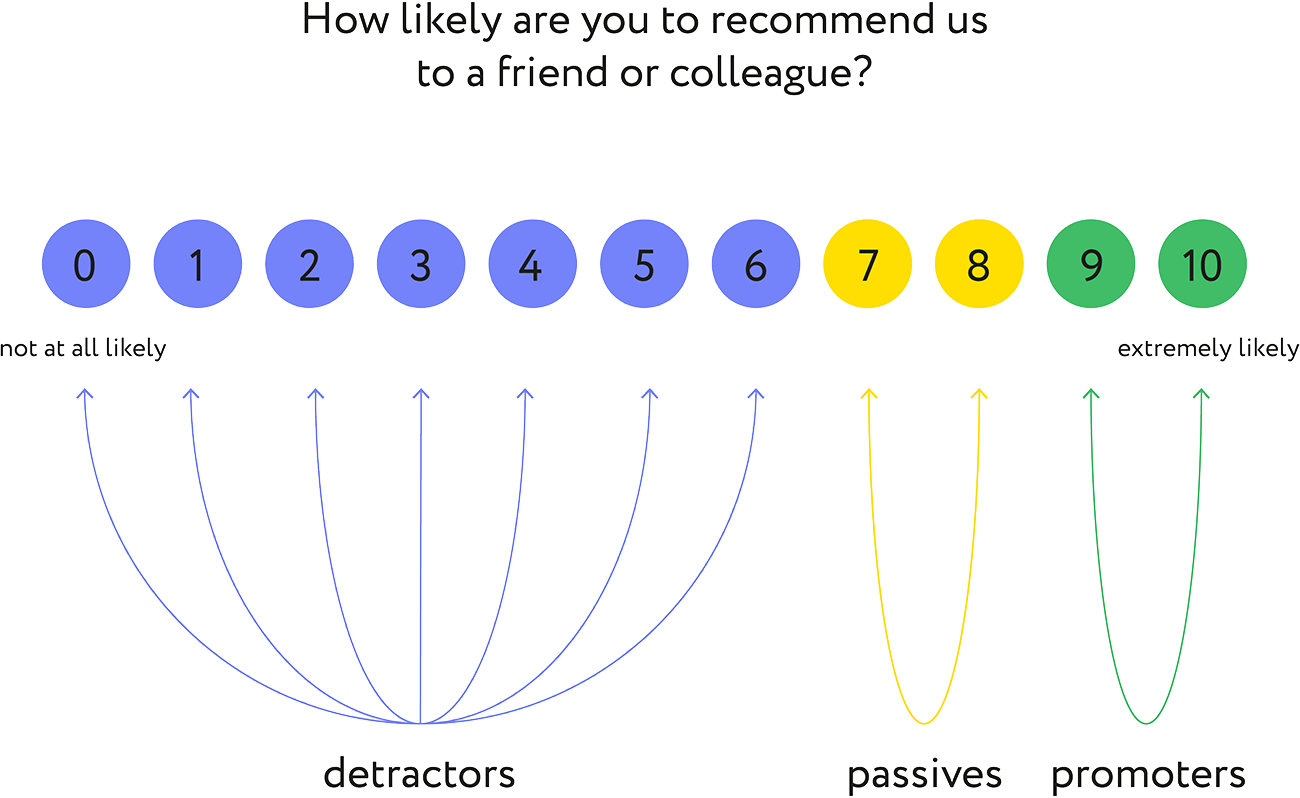
Promoters are customers that are happy with your product, find value and trust your brand enough to recommend it to family and friends. If they are that satisfied, they will also likely take the time to review you on a public site. If you don’t run an NPS program, you can also find promoters by looking at very active users, or customers who’ve responded positively to customer satisfaction surveys.
Asking your promoters to leave a review can actually be an automated process. When Baremetrics set up their NPS survey, they used a combination of Promoter.io and Zapier to automatically reply to any customers that responded with a 9 or a 10. They thanked the customer for being an advocate, and asked for them to share a pre-written tweet.
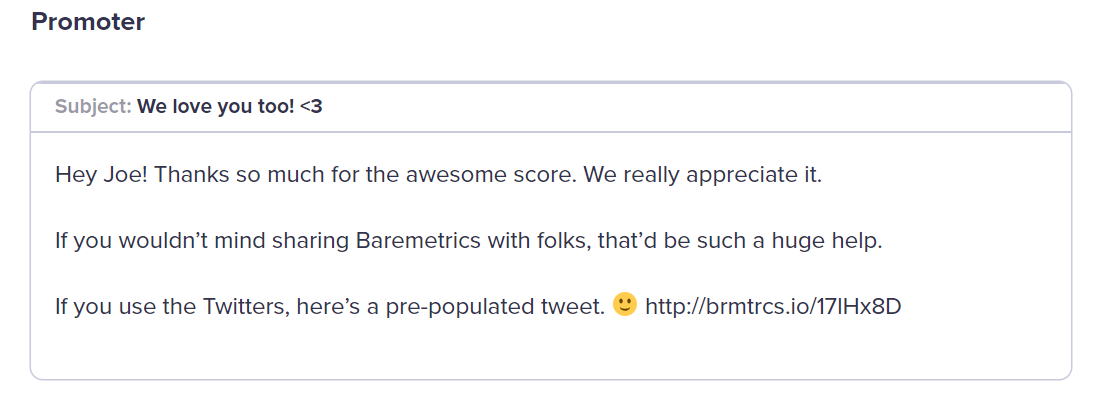
Instead of asking for promoters to share a tweet, you could easily direct customers to your Facebook page, Capterra product site or Yelp to leave a quick review, depending on which site has the most relevance to your industry. These customers are already happy with your product — they are the most likely customers to leave a positive review.
However, you also want to be careful not to overburden one of your promoters. Asking a lot of one person or one company could have adverse effects on the relationship.
Timing can be everything
Always be conscious of when you’re asking customers for a review. If you are in the middle of, for example, a heated negotiation on a contract, it may not be the best time to ask the customer for a favor. Similarly if you just increased prices, or if the customer is brand new to your product, they might not be willing to provide a favorable review…yet.
This can be especially true if you’re shipping products to customers. Amazon does a great job of following up with customers who’ve just had something delivered to ask for a review. If the request came too early and the customer didn’t have their product yet, they would be unlikely to give a review. Or if they did leave a review, it might be something negative about how long the shipping was taking. Understanding your delivery times, and how long it takes for customers to typically unpack and fall in love with your product can make or break potential requests for a review.
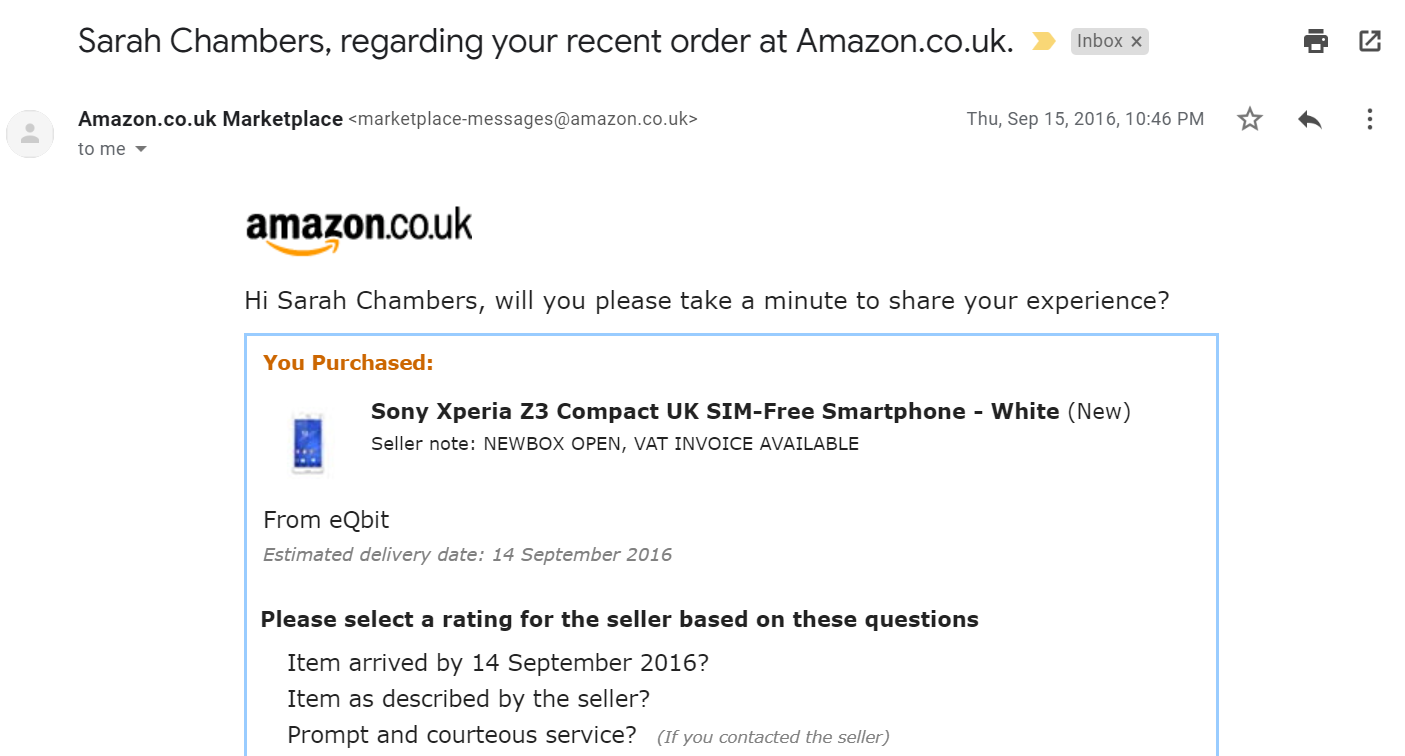
Hotels.com emails guests after their suggested check-in time on the same day to get feedback specifically about the check-in process. It’s perfectly timed so customers have the experience fresh in their mind.
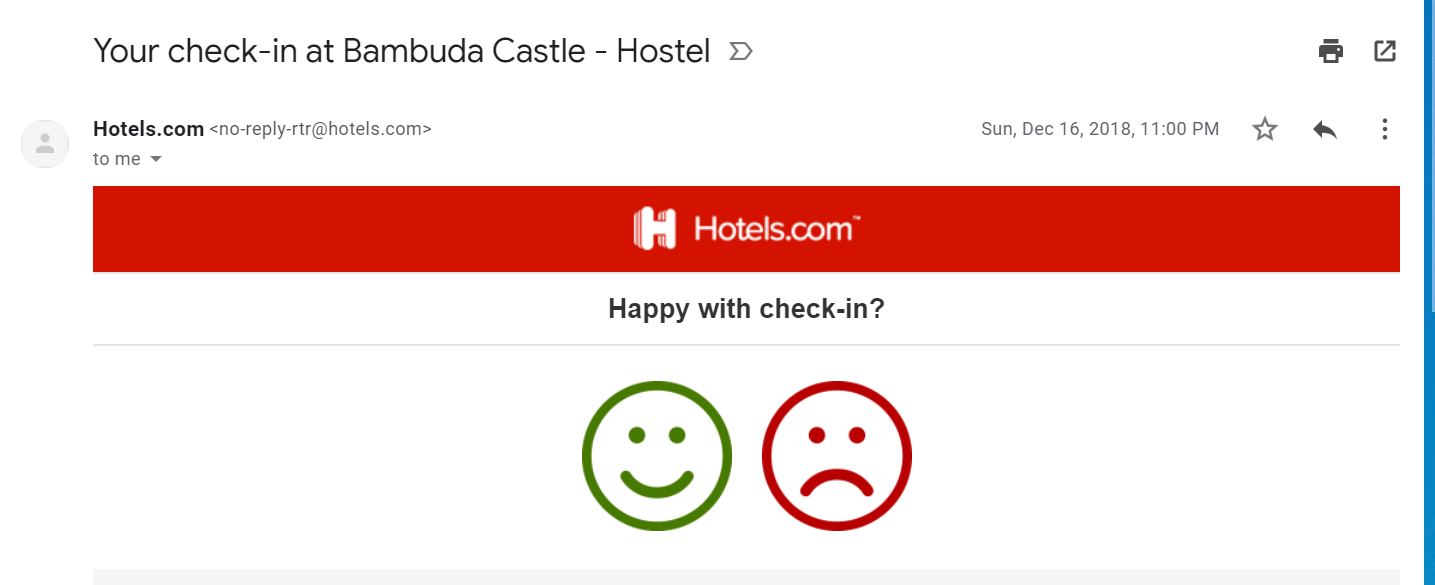
There are also times when customers are primed to leave a great review. Immediately after a repurchase, when they’ve demonstrated success with your product or if they refer another customer to you are great opportunities to ask a customer for a review. You’re clearly top of mind and they are showing that they have a positive perception of your brand.
Guide customers on where to leave reviews
In the B2C world, most reviews are unsolicited, as we will discuss below. However, you should advertise your preferred review sites on your website, or inside your place of business. For example, request a review by adding a TripAdvisor logo on the receipt, or menu. Online retailers request reviews by sending an email a few weeks or months after the product was delivered with a direct link to the product review page. This small call to action helps nudge customers to provide feedback that can be used later.
“Most of our customers find us through TripAdvisor! Please leave us a review so we can make more friends that are as great as you were. Thank you!”
If you’re asking for a review, make it so incredibly easy for customers to find where to go to leave one. Link directly to the site that you want reviews on. Suggest a couple ideas about what they could comment on (service, shipping and delivery, product quality). Customers are more likely to leave a review if you remove all barriers from their path.
“Snap a picture of you rocking your new bag and share it with our community so more of our shoppers can find their perfect purse.”
Meet your customers where they already are
As Hubspot shares in their post on soliciting customer reviews, you don’t need to email customers to ask for their feedback. There are a ton of other channels you can use to nudge your customers towards a review. For example, if you’re looking for Facebook reviews, send a request through Facebook Messenger — the customer is already right there, so it’s even easier for them to write a short comment on your page. If you have a mobile app, you can build reviews right into the platform so customers can leave comments on the go. Lyft does this really well immediately after the ride ends.
Regardless of how you solicit the review, it is vital that you thank the reviewer personally. Showing gratitude for the time spent on formulating that review can go a long way in continuing a positive relationship with your customer.
User-generated Reviews
There are also reviews over which you have little control. Users will add these on Twitter, or Yelp, or Amazon often with little context or details. This type of review needs to be monitored carefully as part of your social media monitoring strategy. A relatively new trend in B2C, according to Shopify, is that user-generated content is starting to become more trusted. Millennials have been shown to trust user-generated content on Instagram & Youtube 50% more than traditional marketing material.
To capitalize on this trend, encourage this type of review by adding engagement opportunities into your product. There are some things you can do to help shape the conversation and control these reviews:
- Promote a common hashtag — eg. Coca-Cola’s #ShareACoke
- Add your social media links on your packaging or web content
- Internally encourage your employees to amplify your blog posts, tweets, Instagram content, and other media
- Build your brand on social media to encourage your users to do the same eg. Nike’s social media strategy includes promoting others joining the conversation online
- Advertise the social good your organization does
In all of these cases, you are not explicitly asking for a review, but by providing more avenues and making them more readily available, the content will start to appear. You are creating shared experiences among your users. These experiences help to form a community.
A great example of this is the #CaughtOnDropCam campaign from Nest. Through user-generated content and a hashtag, this organization created a viral community of owners sharing video from their Nest Camera Device. While not explicitly reviews, the content showcased a wide variety of use cases, camera quality, and the brand. The community could relate to finding funny captures and wanted to share the experience.
Working with influencers
As consumer trust in traditional advertising fades, companies are looking to connect with potential buyers using other means. One of these new ways is by using influencers: a person with a large, dedicated online following that could reach and persuade (or influence) your target audience. For example, if you sold yoga leggings, your target audience would be women who did yoga. They might be influenced by a TV star, a yoga teacher or a lifestyle blogger. If you can get your product in front of these influencers and get a positive review from them, it’s a very effective marketing strategy.
According to a survey by Twitter, 49% of respondents most highly trust influencers, including over family and friends, for product referrals and recommendations. That’s a big opportunity you could be missing out on if you aren’t actively pursuing and working with influencers.
Influencer marketing is all about making the right connections and nurturing a relationship over time. Hubspot suggests working with influencers in several ways, including:
- Gifting product. Send a sample of a new product with no requirements for a post or a review. Find someone with a following that is similar to your target market and get in contact with them to let them know you’d like to send them a free sample of your product. Hubspot says that being upfront about what you’re doing is the best way to avoid issues later on where the influencer may request payment for a sponsored post: “If you don’t have a ton of merchandise to give away, get in touch with the blogger before sending out gifts to agree on specifics first. That way, if the person really wants to charge you, you can do some math on your end to determine the ROI of the partnership.”
- Product reviews. Often done in collaboration with gifts, a product review from the right person could skyrocket your exposure to potential customers. To decide if someone might be a good fit, look at their previous reviews or partnerships to see what they look for in a brand. This tactic also works for B2B services. Just take a look at this review of Xero Accounting Software by by Technology Advice: https://www.youtube.com/watch?v=3ZOjsEbOPlw
- Influencer Giveaways. Working with the right influencer can get your product into the hands of a lot more people, who you can follow up with for product reviews. These will almost always be paid partnerships with influencers, so make sure you calculate the ROI before getting involved.
Influencers are a new way to get more persuasive, targeted reviews and build trust with your target market. Make sure to nurture your relationships with influencers overtime and keep them on your good side — one bad review from a popular influencer can have a big impact!
Micro-influencers
Worried the Kardashians might be a little out of your price range? Don’t worry. With the rise of -, any company can harness the power of online influence. Micro-influencers are online personas with followings between 1000 and 10,000. They tend to get more engagement on their posts because they are highly specified, and usually connect more authentically with a large part of their audience.
Micro-influences, says Forbes, are becoming more popular because they are cost-effective and micro-targeted to a niche audience. You don’t need to drop a ton of cash on partnering with a micro-influencer. Often, a free sample is all they need in exchange for a public review. However, you want to be sure that your product will win them over. As Kristen Wessel writes, “Keep in mind that the influencer will write an honest review, not a positive review. If you aren’t confident in the quality of your product, improve it before asking an influencer to do a review.”